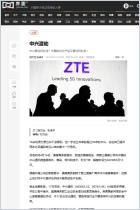
Article
The Clash of Constellations
With a flood of private sector companies entering the ring, China hopes to finally catch up to the U.S.’s Starlink.
The Wire China,
2024
Read or listen offline
Amazon Kindle
auto-generated audio
1×
Log in to listen to the audio summary.
auto-generated audio
Recommendation
America leads the space race in low Earth orbit technology, but China is revising its game plan to compete in this realm. China faces many obstacles, including costs, in its quest to become a viable competitor in satellites, yet state-owned enterprises will enjoy a first-mover advantage. In this enlightening report, journalist Rachel Cheung recounts China’s progress in building and running a massive low Earth orbit constellation, along with its implications for the rest of the world.
Summary
About the Author
Rachel Cheung is a staff writer for The Wire China, based in Hong Kong.




















Comment on this summary